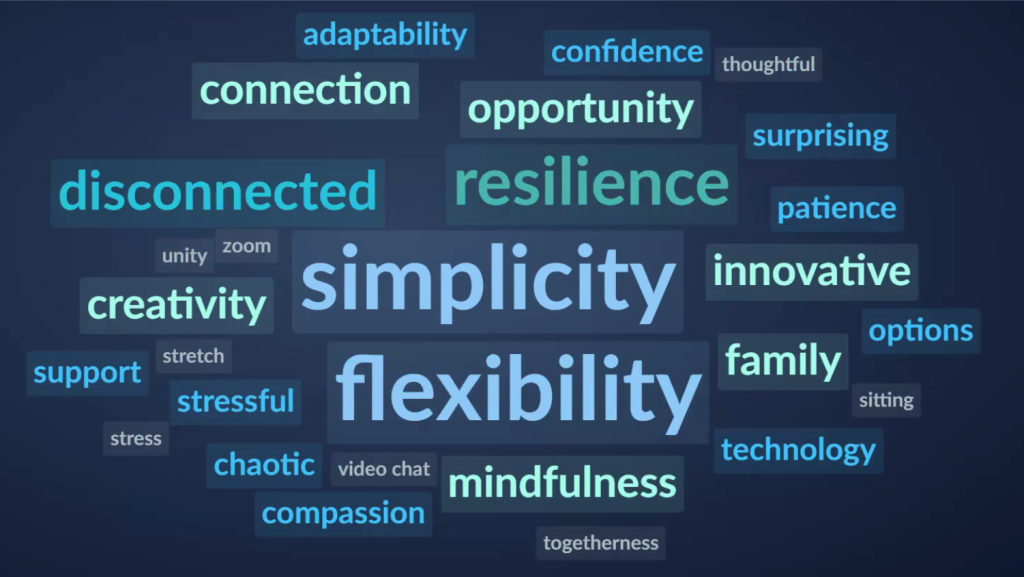
Utah State Faculty Come Together to Promote Student Success
One passionate professor’s commitment to his or her students has the ability to change lives. But when you have a large group of educators with that same desire? That has the potential to drive meaningful change at scale.
This mindset is how Utah State University (USU)’s faculty have approached recent challenges and come out on the other side even stronger than before.
For several years, Dr. Travis Thurston, assistant director of USU’s Office of Empowering Teaching Excellence (ETE), has been researching and working with staff members on what he calls the “architecture of engagement,” a plan for how the university can support and engage instructors in a process of instructional improvement.
Better Together
This ongoing effort to support and improve instruction at USU created an essential foundation and culture that faculty relied on to help them come together this spring to support students and staff when the university had to switch to remote learning.
Right away teamwork was evident.
“We had three to four days to make this transition for hundreds of courses, and we have a relatively small team compared to the number of instructors we have. We had to rely on our own faculty stepping up to support their peers, and it was really fantastic,” explains Thurston.
In addition to professors, thirty graduate students in the university’s Instructional Technology and Learning Sciences program jumped in to lend a hand. “Having their help nearly doubled the number of people we had to help support faculty. We quickly set up a system to handle any requests for assistance, and a faculty member in the instructional technology and learning sciences program helped us to start feeding out tasks to mentor faculty that needed extra support.”
The priority through it all, Thurston says, was to determine how best to meet the needs of their students.
Supporting Students
To assure all students could continue their academic growth, the university first had to address the technology needs of its students. “We have a lot of students who rely on the resources on campus like a computer lab. Many students don’t have a laptop, and it’s hard to engage in an online course from a smartphone. We had instructors reach out to ask if we had available laptops to share with students and how to ensure students could connect with reliable WiFi,” he says.
Faculty and staff across campus also recognized the importance of both the mental health and physical needs of students. Dr. Rose Judd-Murray, assistant professor in the School of Applied Sciences, Technology & Education, adapted her schedule to ensure she could make regular and meaningful contact with her students to keep them engaged and in good spirits. Dr. Colby Tofel-Grehl, associate professor in the School of Teacher Education & Leadership, used Twitter to reach out to USU students, requesting they send her a private message if they were food insecure. “Colby drove around the community to collect food donated by our faculty and staff and then delivered it to students in need,” Thurston says.
Sharing Resources
Instructors also came together to support each other during the trying times of remote learning. Thurston worked with Dr. Mitchell Colver, who manages the data science team at USU’s Center for Student Analytics, to develop a webinar series focused on remote learning best practices. Thurston said one of the most helpful topics was to highlight the campus professional staff and resources available to help faculty—instructional designers, analysts, librarians and media production, among others.

Faculty at Utah State shared one word to describe online teaching in the spring. This word cloud visualized that.
Additionally, as a team, USU faculty across disciplines collaborated to help each other find and use OpenStax and other open educational resources (OER) in a timely and beneficial way. Thurston reflects, “I think it has been really beneficial for faculty not having to feel like they have to create all this new content because there’s fantastic content that exists as OER that we can be utilizing.”
USU continues to find new ways to equip its students and faculty to ensure success.
For summer sessions, the university is conducting online courses for students, but additionally, Thurston says, for hands-on courses such as labs, “our classrooms team has been going through and adding technology to a lot of classrooms to allow students who can’t be physically present in the classroom to still be able to participate.”
For instructors, USU is partnering with ACUE to provide a select number of faculty a comprehensive course in Effective Online Teaching Practices. The university also is hosting two eLearnX conferences. These events, co-sponsored by the ETE and by the university’s Center for Innovative Design and Instruction, provide USU faculty with a three-day virtual experience covering teaching tools and methodologies of online, broadcast and blended instruction.
To support learning through the fall and beyond, USU also has a faculty committee working on an “open access book” covering topics ranging from “teaching in a remote environment” to “how to connect with students during social distancing.”
Through it all, the USU faculty and administration are committed to a growth mindset and true collaboration to engage their students in new and innovative ways, clearing the path for success.
The recipe for success, according to Thurston? “It takes all of us working together.”

